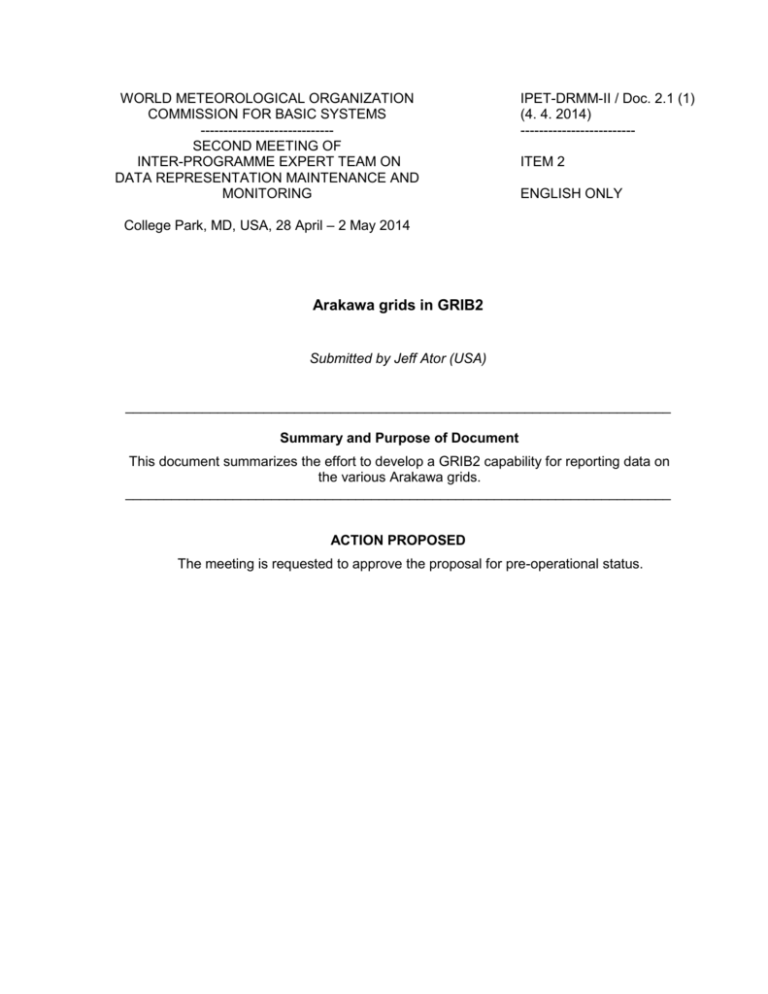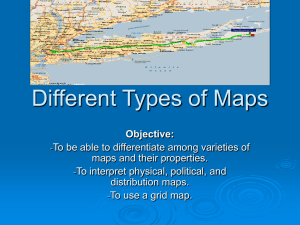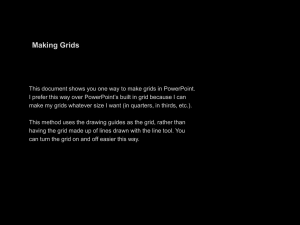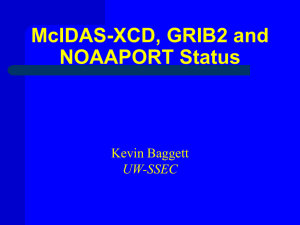Doc 2.1(1)
advertisement

WORLD METEOROLOGICAL ORGANIZATION COMMISSION FOR BASIC SYSTEMS ----------------------------SECOND MEETING OF INTER-PROGRAMME EXPERT TEAM ON DATA REPRESENTATION MAINTENANCE AND MONITORING IPET-DRMM-II / Doc. 2.1 (1) (4. 4. 2014) ------------------------ITEM 2 ENGLISH ONLY College Park, MD, USA, 28 April – 2 May 2014 Arakawa grids in GRIB2 Submitted by Jeff Ator (USA) _______________________________________________________________________ Summary and Purpose of Document This document summarizes the effort to develop a GRIB2 capability for reporting data on the various Arakawa grids. _______________________________________________________________________ ACTION PROPOSED The meeting is requested to approve the proposal for pre-operational status. DISCUSSION At the IPET-DRC-III meeting (Melbourne, Australia in September 2011), an idea was formally introduced to allow the GRIB2 reporting of data staggered according to the Arakawa E grid. This grid, along with related A, B, C and D grids, was first described in Arakawa, A.; Lamb, V.R. (1977). "Computational design of the basic dynamical processes of the UCLA general circulation model". Methods of Computational Physics 17. New York: Academic Press. pp. 173–265. and more details are available from http://en.wikipedia.org/wiki/Arakawa_grids The initial proposal was submitted for review and further validation, and since that time further refinement has taken place as a result of comments received. The proposal makes use of 4 unused bits within GRIB2 Flag Table 3.4, in such a way that is backwards-compatible for all existing uses of this table, and in particular in a way that allows all Arakawa grids (A, B, C, D and E) to be defined using existing Grid Definition Template 3.1 The latest proposal is shown below and has been well-received by members of the team via email discussion, including sample messages that were provided for validation on 6 March 2014. We wish especially to thank Eizi Toyoda (JMA), Sibylle Krebber (DWD) and Marian Majan (IBL) for their valuable contributions to this process, and we would now like to request final IPET-DRMM approval of the proposal for pre-operational use in GRIB2. PROPOSAL Flag table 3.4 – Scanning mode Bit No. Value Meaning 5 0 1 Points within odd rows are not offset in i (x) direction Points within odd rows are offset by Di/2 in i (x) direction 6 0 1 Points within even rows are not offset in i (x) direction Points within even rows are offset by Di/2 in i (x) direction 7 0 1 Points are not offset in j (y) direction Points are offset by Dj/2 in j (y) direction 8 0 1 Rows have Ni grid points and columns have Nj grid points Rows have Ni grid points if points are not offset in i direction Rows have Ni-1 grid points if points are offset by Di/2 in i direction Columns have Nj grid points if points are not offset in j direction Columns have Nj-1 grid points if points are offset by Dj/2 in j direction Notes: (4) La1 and Lo1 define the first row, which is an odd row (5) Di and Dj are assumed to be positive, with the direction of i and j being given by bits 1 and 2 (6) Bits 5 through 8 may be used to generate staggered grids, such as Arakawa grids (see Attachment, Volume I.2, Part B, Att. GRIB) (7) If any of bits 5, 6, 7 or 8 are set, Di and Dj are not optional (8) If any of bits 5, 6, 7 or 8 are set, and if La2 and Lo2 are defined by the grid template, then: (i) La2 = La1 + ( Nj * Dj * sign(j direction) ) (ii) Lo2 = Lo1 + ( Ni * Di * sign(i direction) )






